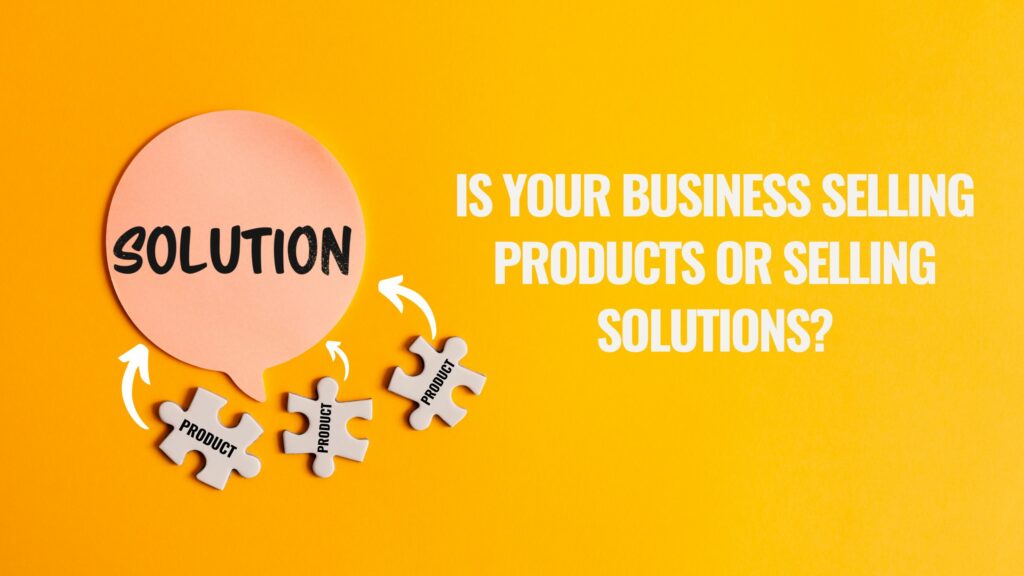The vacuum cleaner that cuts carpet cleaning time in half, the smartphone that is a portable office, the hand baskets that are colour-coded to denote assistance needed or no assistance needed, the air tag that allows for luggage tracking.
Businesses exist to sell, for the most part. But, the big question is always, “What is the business selling?” I know that this sounds like your basic, fundamental, business 101 question, but it has become even more relevant in a world where customers want solutions to their problems and not just products or services that deliver single-value functionality. Back in the day, marketing strategists discussed product line extensions, now the discussions centre around how products and services solve everyday problems for customers.
So, there was a time when customers who needed a bed, bought a basic bed and possibly a mattress from a home furnishing store. Nowadays, that same store will need to reinvent itself into a home décor store, selling living space ideas. Customers will now be drawn to the store because the bedroom is now curated into a zen-like space, where all of the fittings and furnishings are harmonized around a theme, with co-ordinating colours. The landing point for this coherent strategy, will be to transport the customer emotionally, to a space where he or she can decompress after a long day at work. This store is selling self-care, stress relief and beckoning the customer emotionally, to reproduce the bedroom environment, at home. At a price, of course. Clearly, this store would have understood the assignment, because sales are likely to be brisk, with customers purchasing the exact items on display.
“What is the business selling?” I know that this sounds like your basic, fundamental, business 101 question, but it has become even more relevant in a world where customers want solutions to their problems and not just products or services that deliver single-value functionality.
Whilst there will always be customers who want only the “functional bed,” by adding a more muscular strategy that plays to deepening and widening the service-solutions mix, businesses can increase the likelihood of bringing more traffic to their physical or e-branches and increasing sales levels.
There is no magic bullet to achieving the right service-solutions mix. The starting point is discovering the customer’s deep seated, ultimate need or problem and then creating an experience that will place the business head and shoulders above the surrounding experiences. The businesses that get this mix right are not special, by any means, they’ve just cultivated an affinity for running their own race.
Businesses that run their own race, tend to set an overarching goal to outpace themselves. They self-compete and are more pre-occupied with building value through continuous self-innovation and consistent self-disruption. The most pervasive question in which these businesses immerse themselves is, “How can we do tomorrow, what we did today for our customers, but just better, more opportunistically and more life-improving?”
There is no magic bullet to achieving the right service-solutions mix. The starting point is discovering the customer’s deep seated, ultimate need or problem and then creating an experience that will place the business head and shoulders above the surrounding experiences.
Given the vicissitudes of the pandemic, another early action on this journey of uniqueness, should very well be the declaration that “normal may no longer exist.” This may be one of the most disruptive statements that a business can make to itself, if a “uniqueness” has to emerge. This statement possesses the energy to prompt the leaders of the business to dissociate from their existing belief systems and to usher in a bolder, more truly change-centric, mindset and methodology.
Can you imagine a group of business leaders seated around the decision-making table pondering on the possibilities for service and customer experience outcomes, if they are no longer tethered to tired beliefs about serving customers? If this exercise is taken seriously, the emerging decisions can alter the trajectory of the business, possibly forever.
Altered thinking patterns would give way to newly-minted possibilities that, in the past, would not have been entertained and pursuing the best service-solutions strategies, would be the propellant for redefining the way customers are served.
Pursuing the best service-solutions strategies, would be the propellant for redefining the way customers are served.
This is not a time for businesses to be comfortable with their existing thinking patterns, leadership patterns or service delivery levels. It’s a time to stack up business intelligence in the areas of emerging technologies, changing customer trends, financial technology solutions and operating efficacy.
During the pandemic, necessity became the mother of acceleration and businesses were forced to shift gears to remain relevant and reachable. Now, as we resettle, it’s a good time to remember that customers were the great teachers during the pandemic and will continue to be even more so, as we go into the future.
Just for the curious amongst us, a relevant question to ponder at this time, of course, would be, “How many businesses are teachable?”

